Galileo Second Generation (G2)
Non-EO
ESA
Planned
Position and Navigation
Quick facts
Overview
| Mission type | Non-EO |
| Agency | ESA |
| Mission status | Planned |
Galileo Second Generation (G2)
July 14, 2022: Europe’s Galileo constellation is already the world’s most precise satellite navigation system, but now Galileo Second Generation, G2, is coming. A set of 11 procurements – adding up to a maximum of up to approximately 950 million euros – are being released over the course of July by ESA, aiming for this next generation satnav system to begin operations and provide new capabilities later in this decade. 1)
The state-of-the-art G2 satellites will represent a major step forward on what has gone before and will incorporate numerous technology upgrades, developed through EU and ESA research and development programmes. Employing electric propulsion for the first time, and hosting an enhanced navigation antenna, their fully digital payloads are being designed to be easily reconfigured in orbit, enabling them to actively respond to the evolving needs of users with novel signals and services.
Building on all the preparatory development activities executed in recent years, ESA has actively engaged G2 procurements in all areas, starting with the critical Batch 1 of G2 satellites and G2 clock procurements awarded during 2021, which are now fully engaged and in preparation for their critical design reviews next year, which will confirm they are indeed fit for purpose.
Galileo is Europe’s civil global satellite navigation constellation, currently the world’s most precise satnav system, offering metre-scale accuracy to more than 2 billion users around the globe. With improved accuracy, the new generation should be able to offer decimetre-scale precision positioning to all.
These Galileo Second Generation (G2) satellites will revolutionise the Galileo fleet, joining the 26 first generation Galileo FOC satellites in orbit today plus the 12 ‘Batch 3’ satellites currently in production and testing.
The new G2 satellites will be constructed in a short time scale, allowing them to commence operations in space as soon as possible.
The G2 satellites will gradually join the existing constellation, but will be much larger than existing satellites. Using electric propulsion for the first time, and hosting an enhanced navigation antenna, their fully digital payloads are being designed to be easily reconfigured in orbit, enabling them to actively respond to the evolving needs of users with novel signals and services.
New on-board technologies include electric propulsion to propel the satellites from the orbit in which they will be launched to the final operational orbits, allowing two satellites to be launched at once despite their increased mass. Inter-satellite links between the satellites will let them routinely cross-check their performance and reduce their dependency on the availability of ground installations. The satellites will also feature a more powerful navigation antenna, more precise onboard atomic clocks, as well as advanced jamming and spoofing protection mechanisms to safeguard Galileo signals.
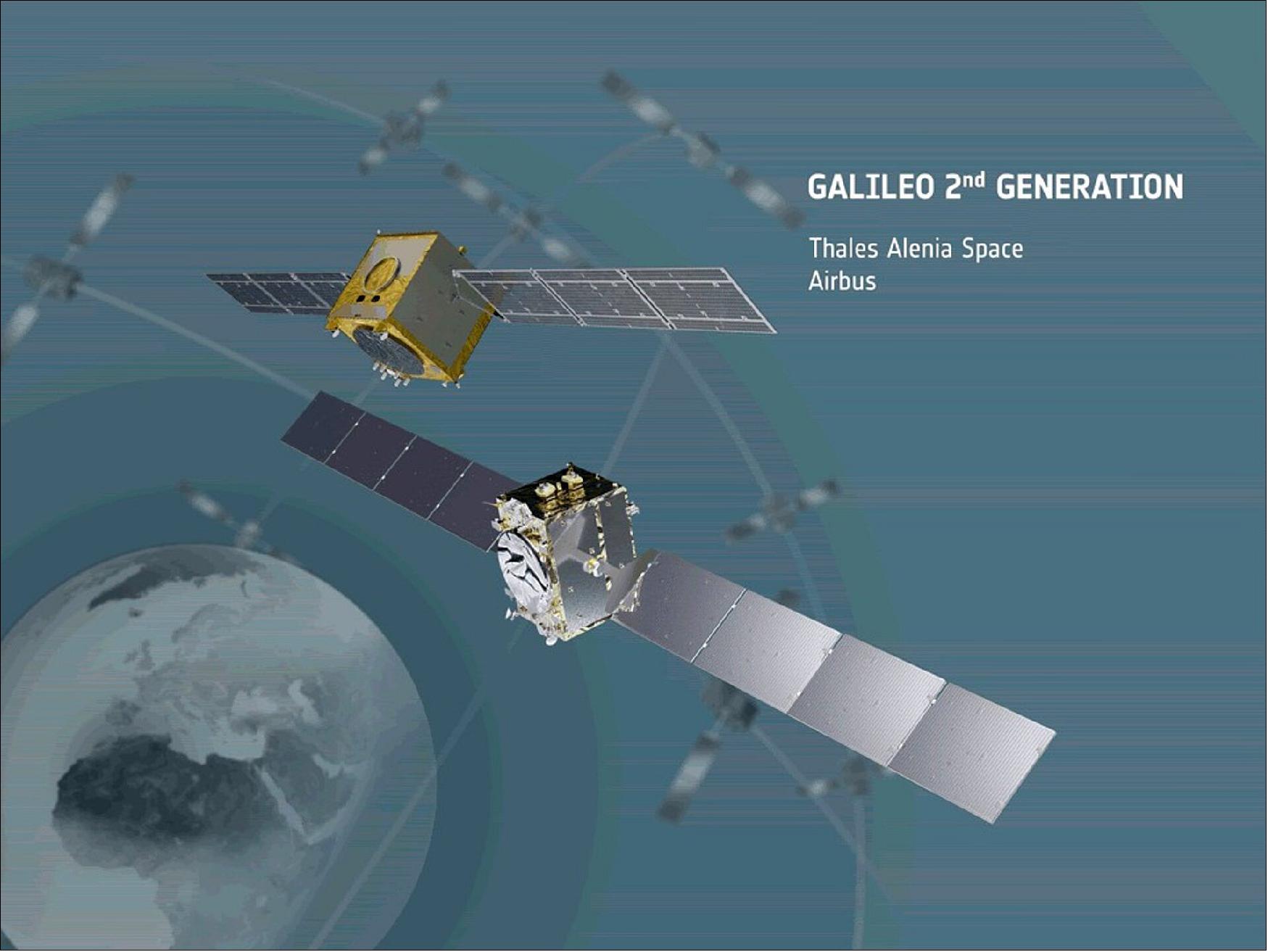
Procuring Galileo’s New Generation on the Ground
Just as ESA, in its role as design authority and system development prime, oversaw development of the first generation of Galileo, it will also do the same for Galileo Second Generation. The G2 satellites and clocks have already been procured last year, but now it is the turn of the associated ground infrastructure necessary to put this second generation to work.
These 11 new procurements address key areas of the G2 ground segment – including the Ground Control Segment to monitor, control and provide services with all Galileo satellites including the required levels of security monitoring– as well as System Test Beds – which will allow the validation of new capabilities and system engineering support, harnessing specialist technical experts as required.
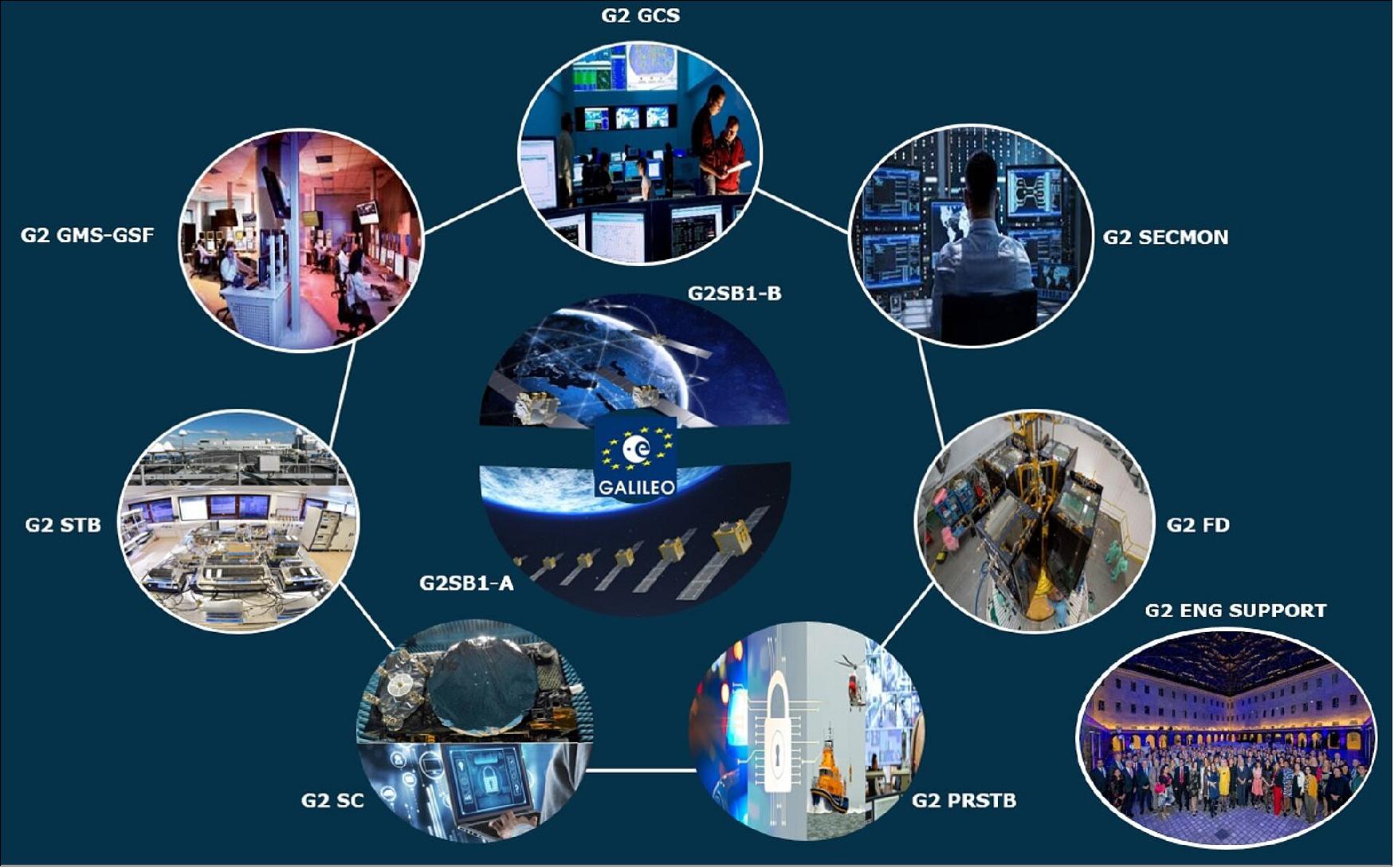
These G2 procurements address key areas of the G2 Ground segment – the infrastructure on Earth needed to make the system work – as well as Test Beds, simulating the system operation in advance of it going to work:
• G2 Ground Control Segment (G2GCS) – used to ensure full control of the G2 satellites
• G2 In Orbit Validation Ground Mission Segment and Secured Facility (G2 GMS-GSF) – to ensure the provision of new and legacy capabilities to Galileo users.
• G2 In Orbit Validation Security Monitoring (G2 SEC MON) – to monitor the security of all elements of the Galileo system
• G2 System Test Bed (G2STB) – for monitoring of the Galileo constellation and the development and validation of all new G2 capabilities, excluding the secure high-accuracy PRS service
• G2 Public Regulated Test Bed (G2 PRSTB) – for the monitoring of the Galileo PRS and the development and validation of all new G2 PRS capabilities
• G2 Security Chain Test Bed (G2SC) – to ensure full compatibility between the security elements of the G2 system: space, ground, receivers
• G2 Filling Device (GS FD) – cryptographic element to enable the secure communication and initialisation between the different security elements of the G2 system.
The procurements also include ‘System Engineering and Technical Assistance Phase CDE’ contracts, gathering key European experts to provide system engineering assistance to ESA in its role as system prime.
“These Galileo Second Generation procurements represent an important step forward for Europe, through the implementation of innovative technologies to ensure an order of magnitude improvements in precision, alongside plentiful new services,” comments Javier Benedicto, ESA Director of Navigation. “G2 is a unique programme for Europe, an ambitious evolution of the Galileo system, encompassing both legacy services and the future of navigation, positioning and timing capabilities for all users to come.”
“These Galileo Second Generation procurements represent an important step forward for Europe, through the implementation of innovative technologies to ensure an order of magnitude improvements in precision, alongside plentiful new services,” comments Javier Benedicto, ESA Director of Navigation. “G2 is a unique programme for Europe, an ambitious evolution of the Galileo system, encompassing both legacy services and the future of navigation, positioning and timing capabilities for all users to come.”
As part of the overall Galileo programme, G2 aims to ensure both the long-term provision of Galileo legacy services that more than 3 billion people around the globe have come to rely on and the exponential evolution of Galileo activities in the coming years, fostering the leading role of European industry across the positioning, navigation and timing sector.
Novel Capabilities from Galileo’s Next Phase
The combination of these 11 procurements will enable the introduction of plentiful new capabilities, aimed at a coming market of assisted and autonomous driving, self-flying drones, and smart cities.
As an example, already under development for the current Galileo constellation, the High Accuracy Service will provide free of charge high accuracy error correction to yield precision down to 20 cm scale, while the Emergency Warning Service will alert entire regions at once in the event of a looming disaster. The G2 satellites, when complemented by these new Ground Segment and System Test Bed procurements, will allow to further enhance these capabilities in the future.
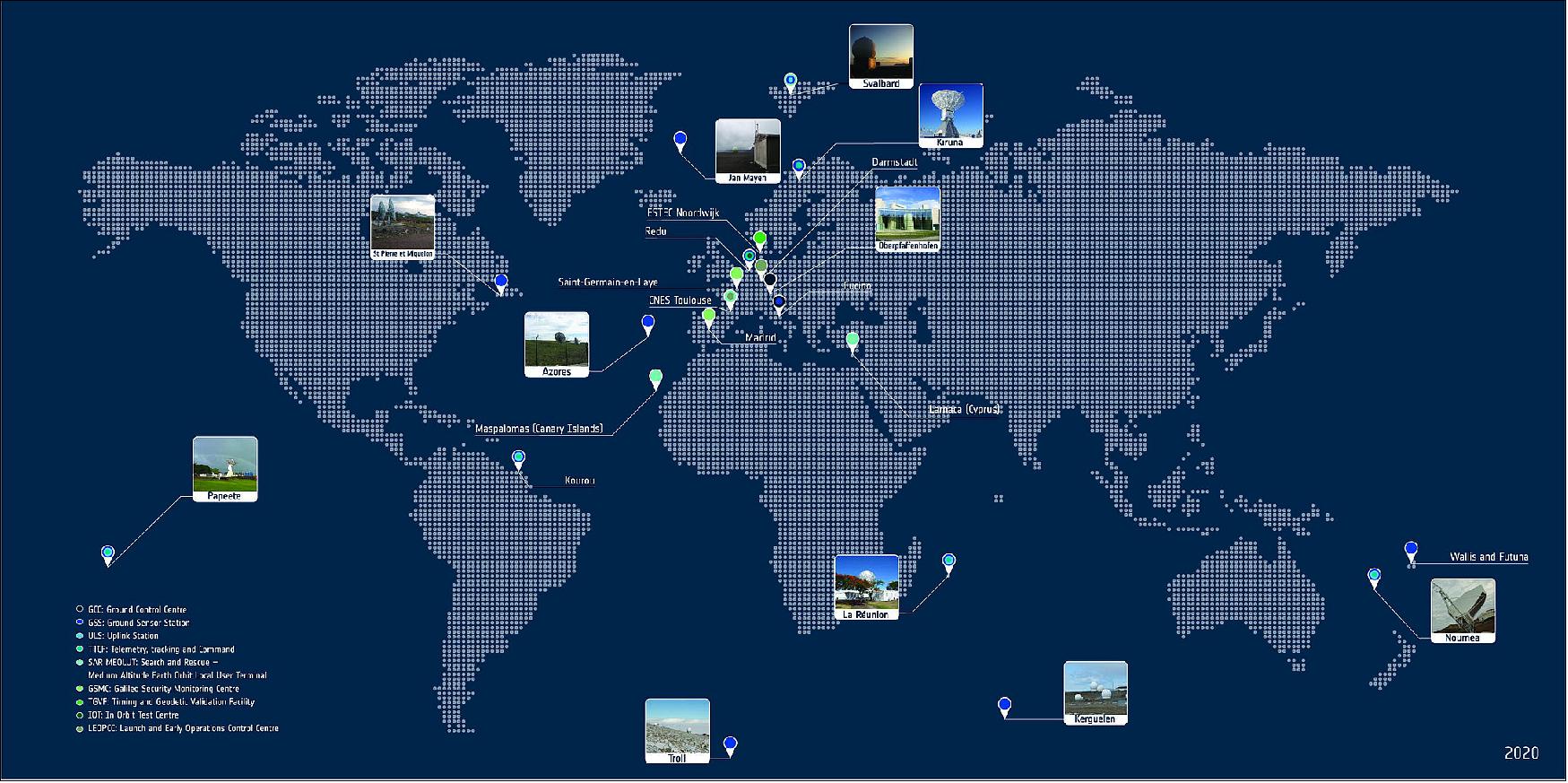
In addition, these G2 procurements will allow the Galileo Programme to exploit all the novel capabilities implemented in G2 satellites, such as inter-satellite links for enhancing the performances of all Galileo services.
“Preparing all these procurements has involved impressive coordination between the many experts of ESA, EUSPA and the EC across several months, we are extremely thankful to all of them.” comments Miguel Manteiga, G2 Project Manager.
“Collectively they will ensure not only the lift-off, Launch and Early Orbit Phase, In-Orbit Testing and Validation of the state-of-the-art G2 satellites, but also the full provision of both Legacy Services and ambitious new G2 capabilities. The result promises to be evolutionary in positioning, navigation, and timing.”
“We aim to keep Europe in the lead in this sector: the G2 programme’s main objective is to ensure that Galileo remains the world’s most advanced global navigation satellite system, while advancing the leading role of European industry.”
These 11 procurements were kick-started late last year and will be fully released over the course of July, with four novel ones being released over the course of July. For some of the contracts, more than 25 industrial consortiums have already been selected and will be able to enter the final competition phase.
ESA wishes all European industries all the success in final stages of this competition processes.
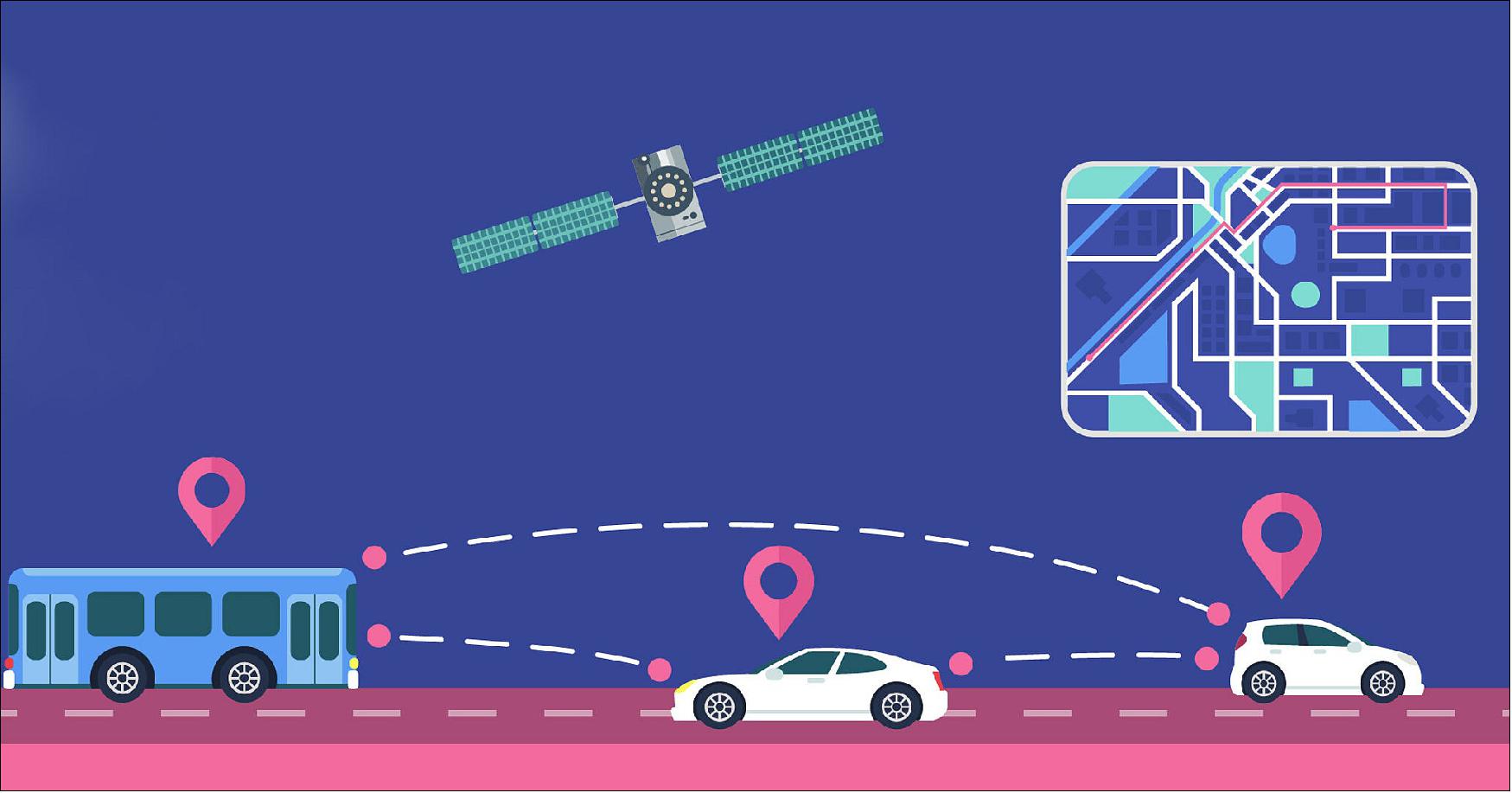
Development Status
• July 19, 2022: Satellite navigation has transformed the way people live and work, but because the majority of us access it via our smartphones, the actual precision of positioning that we end up with has plenty of room for improvement. ESA led a project investigating if an array antenna approach borrowed from satellite design might deliver enhanced positioning for future smartphones, tablets, drones and other mass-market devices. 2)
- All smartphones sold in Europe today should make use of Europe’s own Galileo constellation, which is today the world’s most precise satellite navigation system – delivering metre-scale accuracy to more than 3 billion users around the globe. But smartphone users are not typically accessing the same level of precision as those employing dedicated satellite navigation receivers.
- “Satnav is only one of many different functions our smartphones are designed around, so that their typical localisation error is quite high,” says antenna engineer Victoria Iza, overseeing the project for ESA.
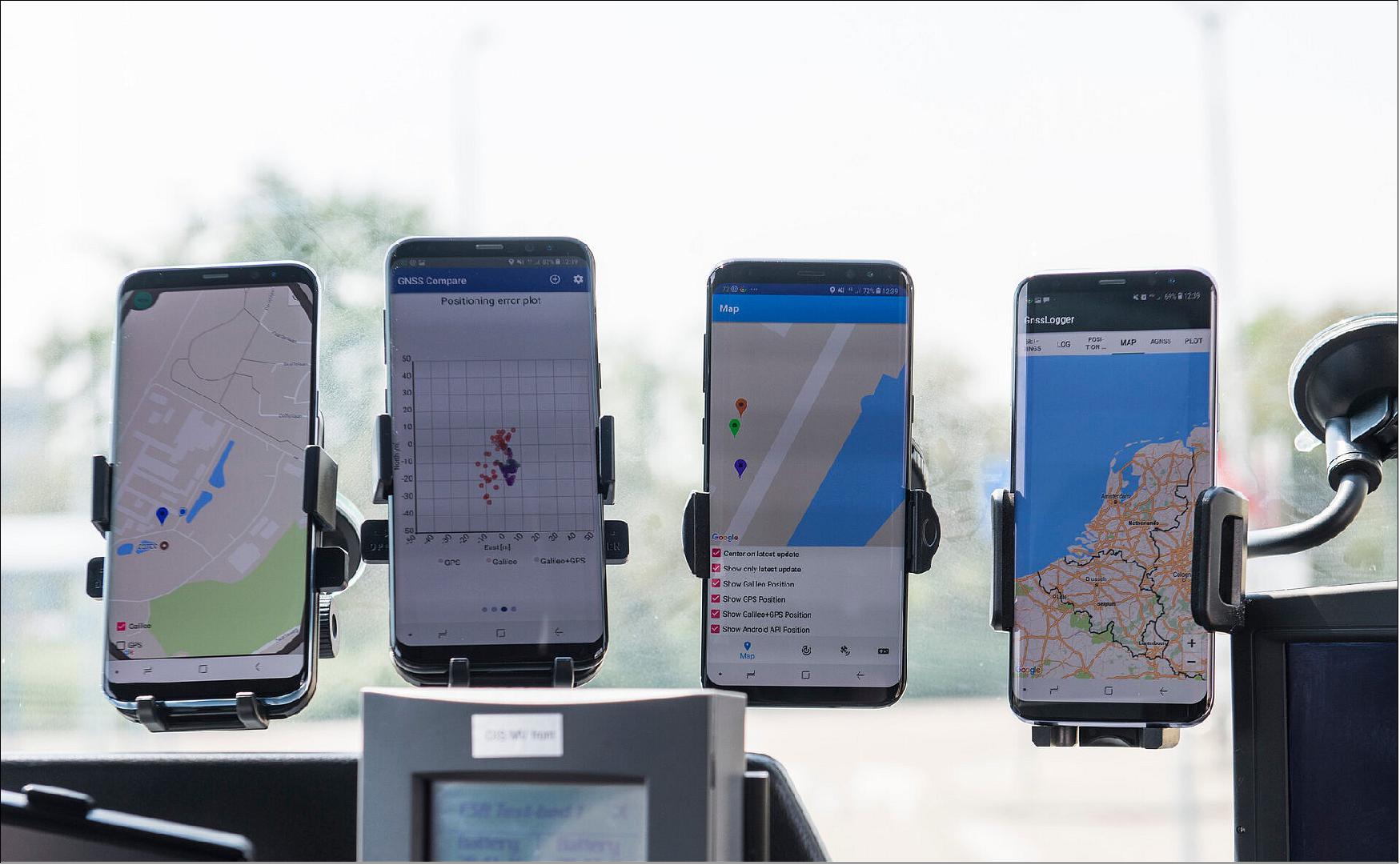
- “Satnav is only one of many different functions our smartphones are designed around, so that their typical localisation error is quite high,” says antenna engineer Victoria Iza, overseeing the project for ESA.
- “In practice it depends on your surroundings, with worst performance in built-up areas and urban canyons where part of the sky is obscured. The localisation error can climb up to 10 m or even higher – still enough to put you in the right street, but only just. That’s because, if you take a smartphone apart, you find its satnav function relies on a single antenna, smaller than a mini-sim card.
- “With the AMELIE (Advanced Multi-Frequency Low-Cost, High Gain GNSS Antennas for next generation of Mass-Market Devices), project, we increased the number of satnav antennas, with one on each side of the circuit board – carefully placed to avoid the phone buttons and speaker – then combined their inputs using an array approach usually employed for satellite antennas. We targeted enhanced performance in geo-localisation, signal gain and phase, suitable for next-generation devices.”
- The original concept came from the Fraunhofer Institute for Integrated Circuits (IIS) with HQs in Erlangen, Germany, and was supported through ESA’s Navigation Innovation and Support Programme (NAVISP), investigating new concepts in the realm of positioning, navigation and timing. Germany’s TeleOrbit company acted as the prime contractor for the project.
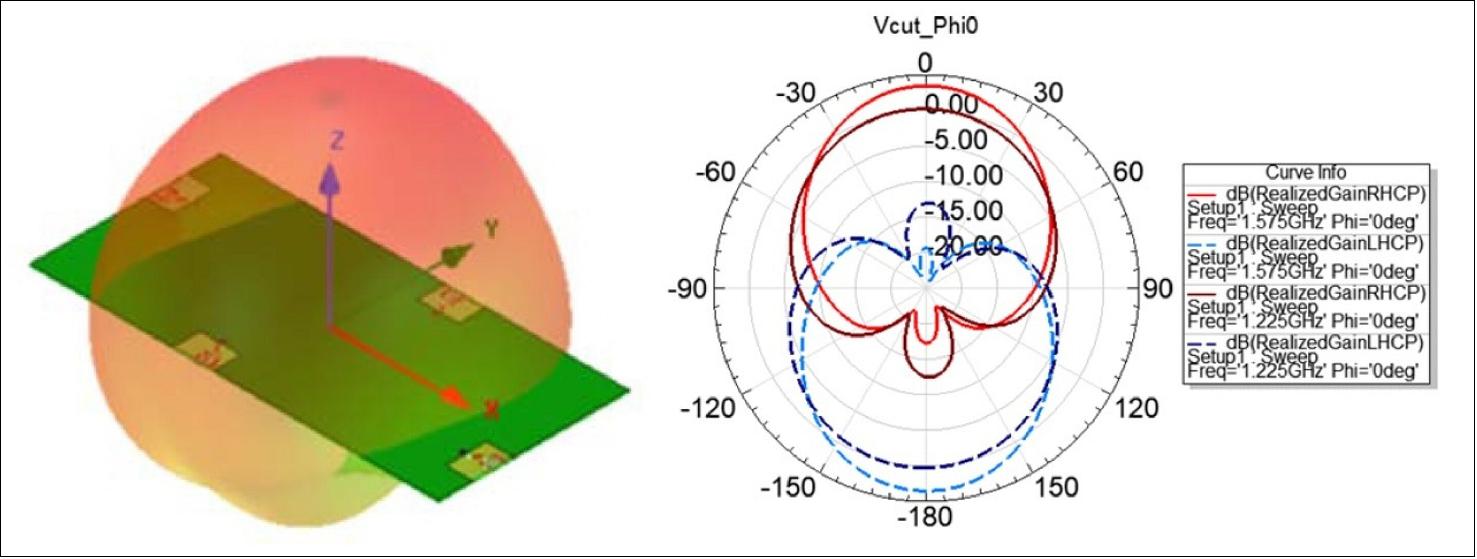
- “More typically our team is working on large-size satellite antennas, so this is an interesting change, moving down in scale to smaller, low-cost, mass-market devices,” adds Victoria. “And when it comes down to it, success is defined by the end-user experience, so that meant that as well as lab-based testing the project team had to go outside and perform a variety of walking and driving trials.”
- Testing took place in and around in the city of Nuremberg, where TeleOrbit and Fraunhofer-IIS are located. Matthias Overbeck of Fraunhofer-IIS explains: “We used our anechoic chamber to assess antenna patterns and mitigation of multipath signals, but we also went out for walks and drives through a variety of different environments, from the built-up city centre to narrow streets and out to less populated open sky areas.
- “A lot depends on the environment because high buildings lead to shadowing of GNSS signals, while all kind of objects also reflect the signals. This multipath signals also reduce positioning precision.
- “Additionally, the field tests showed how important it is to consider the user since the placement of the smartphone in a user’s hand influenced the behaviour and performance of the AMELIE antenna.”
- The team tested two types of antennas: a dual-band design providing two separate frequency bands – offering a big increase in performance over traditional smartphone-class receivers because errors from the ionosphere, an electrically-active atmospheric layer, can be cancelled out – and a multiband version allowing up to five frequency bands, from the GPS, GLONASS and BeiDou constellations as well as Galileo.
- For use in automobiles, the team also assessed a ceramic holder that works to optimise the focus of the antennas to the satnav signals, while keeping the phone at an optimal 30º angle.
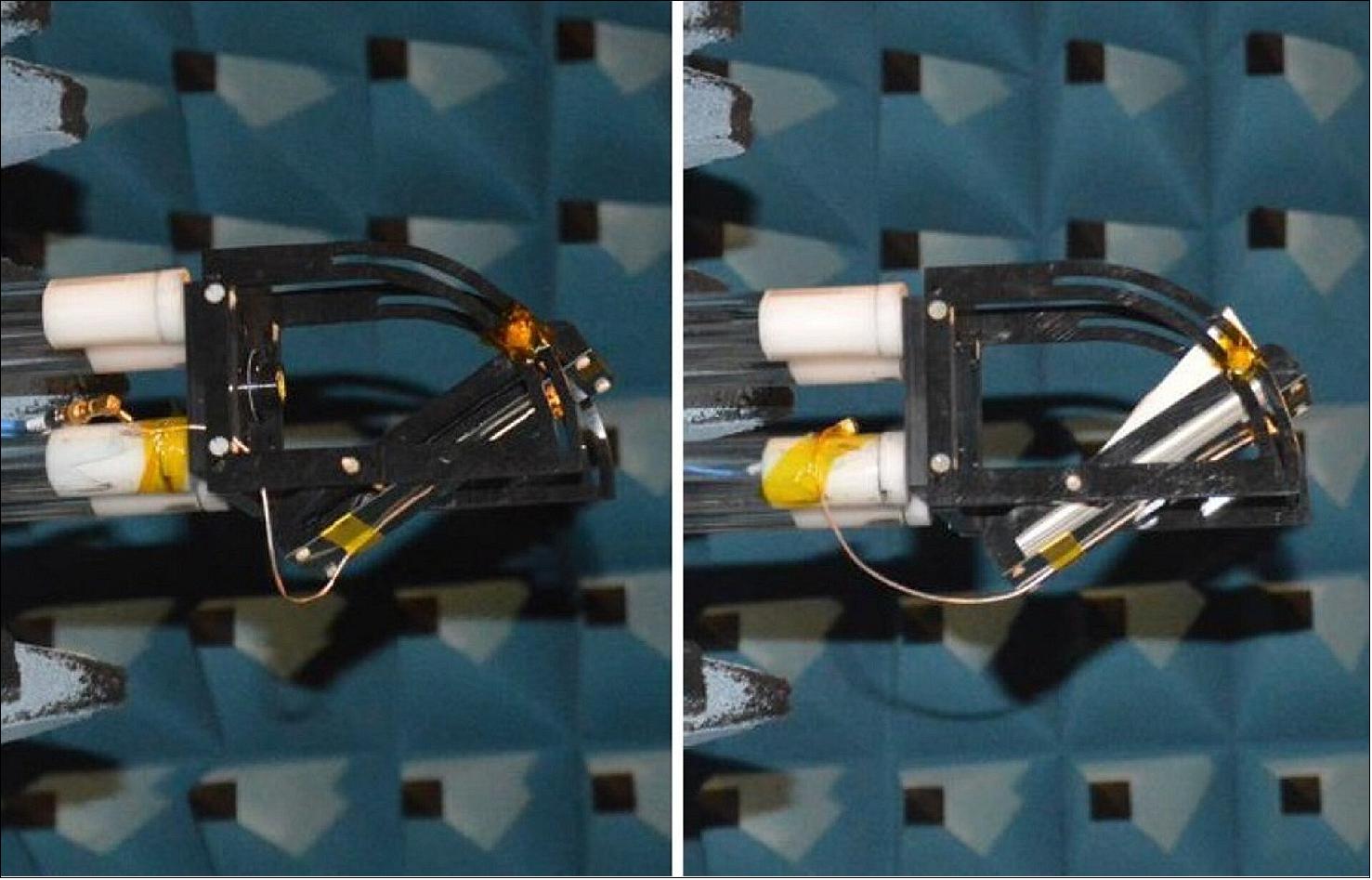
- The team achieved a maximum localisation error of 1 m, a tenfold increase in precision. For their next step they hope to team up with a smartphone manufacturer directly, to get insight into the maximum area available for satnav functionality – bearing in mind that the performance of the antennas can be impinged by neighbouring components.
- They are also reaching out to drone companies, where space is less constrained and the added performance offered by the array antennas could offer a distinct market advantage.
- Daniel Seybold of TeleOrbit adds: “Now it is up to us to find the perfect industry partner to turn the prototype into a working product users can implement.”
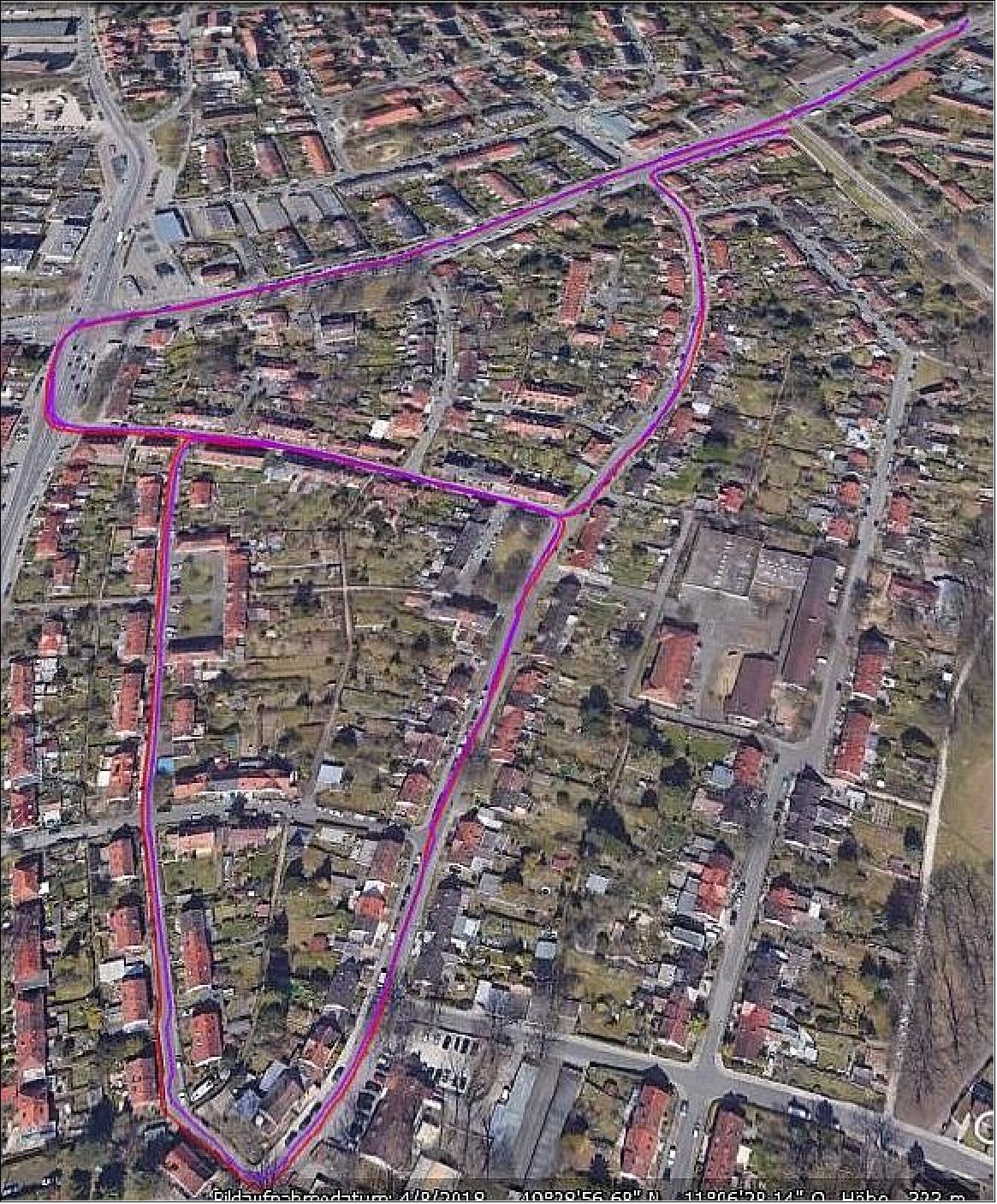
- AMELIE is supported through Element 1 of NAVISP, focused on innovative concepts, techniques, and technologies linked to positioning, navigation and timing. The design went on show at last month’s NAVISP Industry Days.
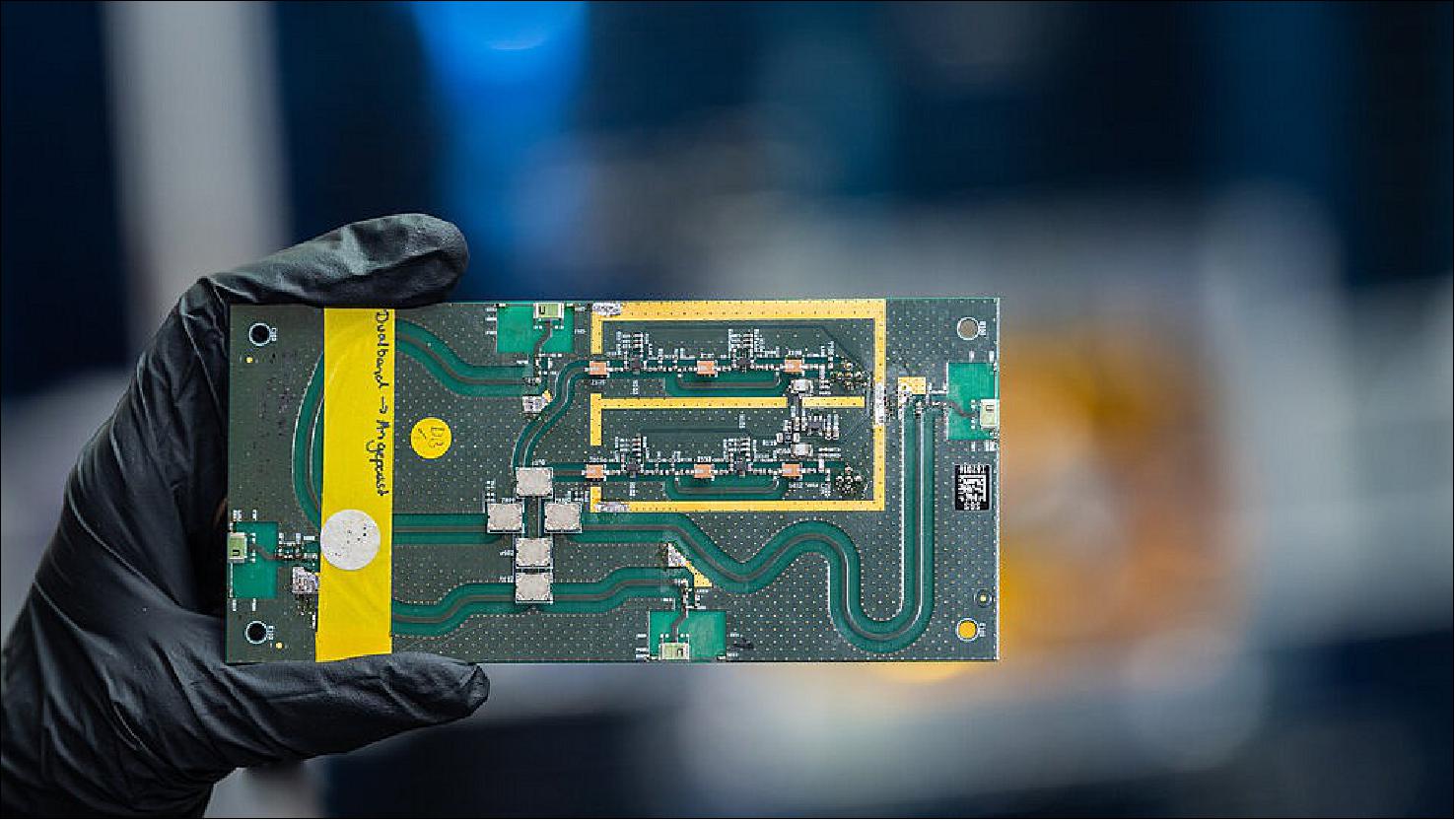
• March 8, 2022: Airbus has successfully completed the Preliminary Design Review (PDR) for its system concept for the second generation Galileo navigation satellites. During this important milestone, Airbus' proposed preliminary design and the customer's system requirements have been fully reviewed and agreed. 3)
- This paves the way for further verification, acceptance and qualification at equipment and module level. Verification at payload level is already in full swing, with the Critical Design Review (CDR) for the satellite structure also due shortly.
- In parallel, the Airbus site in Friedrichshafen, on Lake Constance, is preparing for an industrialised production line for currently six second-generation Galileo satellites. The satellite integration centre, is being completely upgraded to meet current and future requirements for efficient, environmentally friendly, safe and secure production for the Galileo 2nd generation satellites. Galileo second generation is a key milestone in European satellite navigation services that European citizens and billions of users around the world will benefit from, powered by Airbus know-how brought to the project by over 200 highly skilled space engineers.
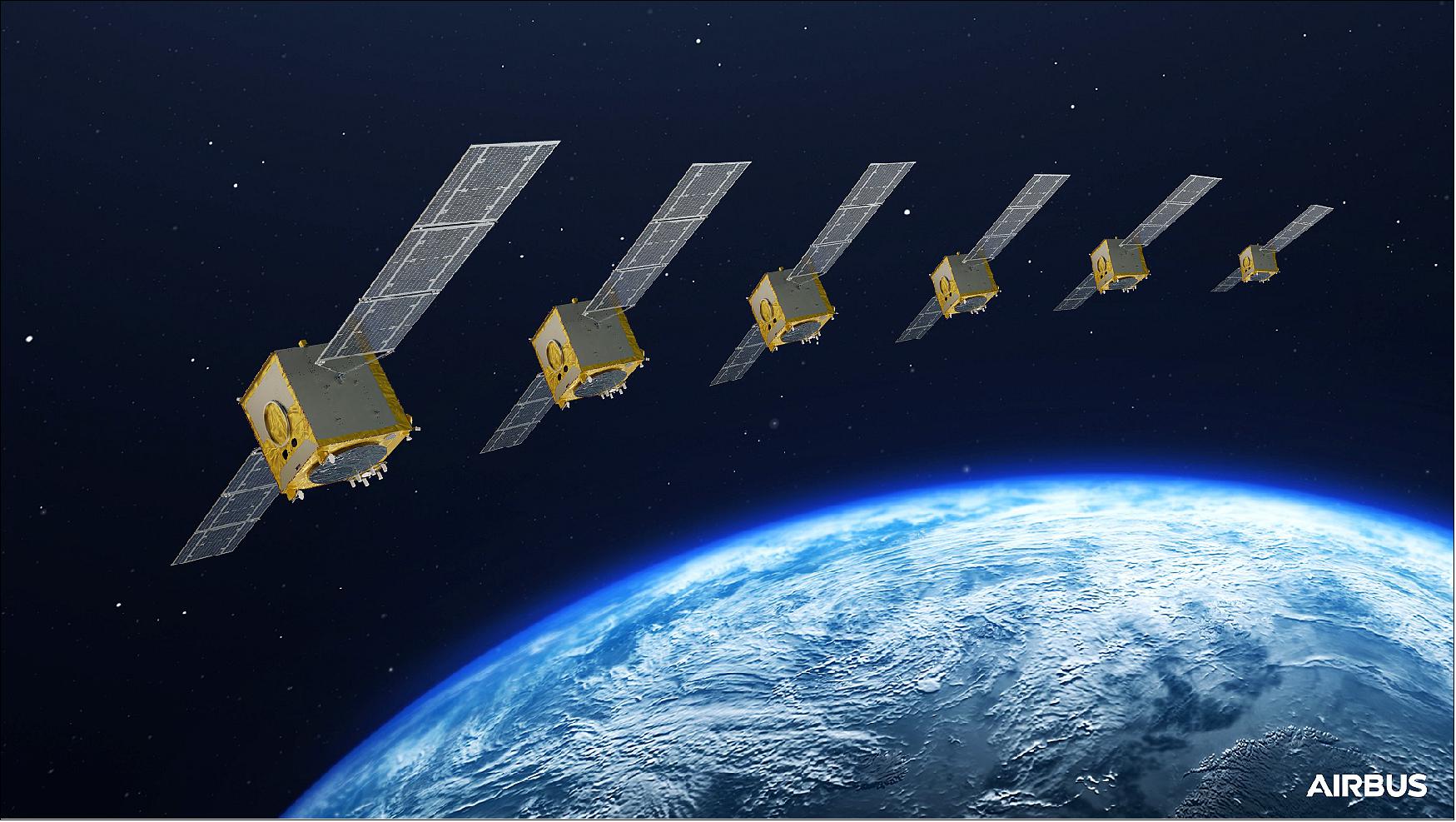
- The world of navigation is changing, driven by rapidly emerging and changing user needs (availability and reliability), a growing number of security threats (jamming and spoofing) and the evolution of other navigation systems. The new batch of Galileo spacecraft built by Airbus is the answer to this changing context. It will make the Galileo service more accurate, secure and dependable, and adaptable over its lifetime spanning two decades.
- Weighing around 2.3 tons, each satellite is designed to operate for about 15 years. The state-of-the-art and all-electric medium-Earth orbit (MEO) platform from Airbus, reuses flight proven building blocks from our Telecoms and Earth Observation programmes, taking advantage of a unique combination of heritage and in orbit experience. The flexible and modular navigation payload solution with future growth capability is also based on telecom elements for signal generation.
- Galileo is managed and funded by the European Union. The European Commission, ESA and EUSPA have signed an agreement by which ESA acts as design authority and system development prime on behalf of the Commission and EUSPA as the exploitation and operation manager of Galileo. The views expressed in this Press Release can in no way be taken to reflect the opinion of the European Union and/or ESA.
• December 20, 2021: The RHEA Group with HQs in Wavre, Belgium, has won a series of multi-million-euro contracts with EUSPA (European Union Agency for the Space Programme) of Prague, to provide security and engineering services and support for European space programmes including Galileo, EGNOS, GovSatcom and Copernicus. RHEA was selected for five ‘Lots’, as consortium leader. 4)
- The RHEA Group has been awarded five separate contracts by the EUSPA to provide both security services and various engineering and support services as part of EUSPA’s recent framework contract renewal programme.
- RHEA is the European market leader in providing security services for the space sector, offering an unrivalled range of security solutions, helping space sector organizations to ensure their entire infrastructure, data and applications are resilient against escalating security threats. During these contracts with EUSPA, we will be providing our comprehensive global space engineering services and solutions that have been developed and proven through our work with leading European space organizations including, to name a few, the European Commission, European Space Agency and EUMETSAT.
- EUSPA plays a major role in all the components of the EU Space Programme: Copernicus, Europe’s Earth observation programme; Galileo, the European Union’s global navigation satellite system (GNSS); EGNOS, the European Geostationary Navigation Overlay Service; and GOVSATCOM, the forthcoming governmental satellite communications programme. The expertise of RHEA and its partners in guaranteeing long-term, high performing service delivery in navigation, timing, Earth observation and telecommunications will also benefit future strategic EUSPA activities, including operation of the second generation of Galileo satellites (G2).
- To support these contracts, embracing the vision and expectations of the European Commission, RHEA worked in close collaboration with European partners from various countries, both large organizations and SMEs, to create two specially tailored consortia, namely Alliance4Security and Alliance4Engineering.
- These consortia bring together organizations with a world-leading combination of expertise in all EU space programmes, underpinned by a solid operational and engineering foundation in the areas of space and security.
- Pascal Rogiest, Chief European Institutions Officer of RHEA Group, said, “RHEA has been working with the GSA, now EUSPA, since 2012, offering security, engineering and support expertise gained from our rich heritage in projects for national and international space agencies and commercial organizations. We are delighted to be awarded this opportunity to pursue this strategic collaboration, continuing our support to EUSPA by providing flexible, reliable and high-end support services for its very complex and evolving technical and operational missions.”
- Nicolas Vincent, RHEA Group Regional Vice President and Account Manager for the EUSPA programme, added “Along with our carefully selected partners, we are now reinforcing the stability of the services we offer and will strengthen the pool of expertise available to EUSPA and the European Commission when facing new challenges in their established programmes such as Galileo, EGNOS, Copernicus and Space Situational Awareness systems. Our growing talent pool is also looking forward to supporting new programmes such as GovSatcom, which requires expertise in connectivity, Euro-QCI and quantum dimensions.”
- EUSPA is the user-oriented operational agency of the EU space programme contributing to sustainable growth, security and safety of the European Union. RHEA will work alongside EUSPA to help support its well-established and developing programmes, as the uptake of its services increases across a wide range of market sectors.
• July 19, 2021: The first Galileo Second Generation hardware has begun testing, with test versions of the satellites’ navigation payloads undergoing evaluation by Airbus Defence and Space at their Ottobrunn facility in Germany and by Thales Alenia Space at ESA’s ESTEC technical centre in the Netherlands. 5)
- The testbed versions of these new navigation payloads designed by the two companies are undergoing testing of their respective navigation antennas to check whether they meet the ambitious performance levels set for the coming generation of Europe’s satellite navigation system.
- Known as the Galileo Payload Testbeds (GPLTBs), these are development models of the navigation payloads intended for the Galileo Second Generation (G2) satellites.
- The main difference is that instead of being assembled from space-ready components like an actual satellite payload, the GPLTBs are built up from ‘breadboard’ electronic parts placed in test racks, with a proof-of-concept version of a navigation antenna attached.
- “The goal with these test campaigns is to prove their design concept early, and anticipate any technical issues that might arise as early as possible,” explain Cédric Magueur, ESA’s Payload Manager for the Thales G2 satellites.
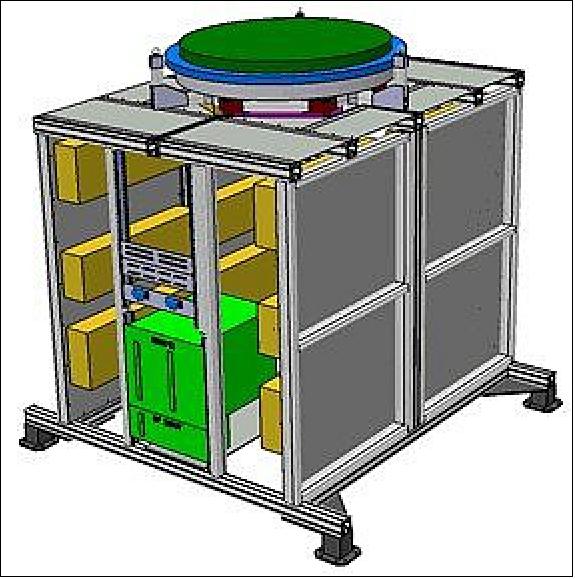
- “These campaigns also allow to develop and validate new performance measurements concepts for these new generation of complex navigation payloads,” adds Dirk Hannes, ESA’s Payload Manager for the Airbus G2 satellites. “This will allow us to optimize the production efficiency of the Flight Model series.”
- Cédric adds: “Results from the testing will feed into the up-coming Preliminary Design Review for the new satellites, backing up the analyses by the companies with solid measurements. Such early testing also supports the ambitious timescale for the development and construction of G2 satellites, with the first satellites planned to reach orbit by the middle of this decade.”
- Galileo is Europe’s civil global satellite navigation constellation, currently the world’s most precise satnav system, offering metre-scale accuracy to more than 2 billion users around the globe. There are 26 Galileo satellites in orbit, scheduled to be joined by other 12 satellites starting to be deployed by the end of this year.
- Next will come the first 12 G2 satellites, featuring enhanced navigation signals and fully digital payloads. This new generation will be made up of two independent families of satellites meeting the same performance requirements, produced by Thales Alenia Space in Italy and Airbus Defence and Space in Germany.
- Airbus Defence and Space’s GPLTB is currently undergoing radiated testing at the company’s Ottobrunn facility, inside a Compact Antenna Test Range (CATR). Meanwhile the Thales Alenia Space GPLTB is about to start testing inside ESTEC’s own Hybrid European Radio Frequency and Antenna Test Zone (Hertz) chamber.
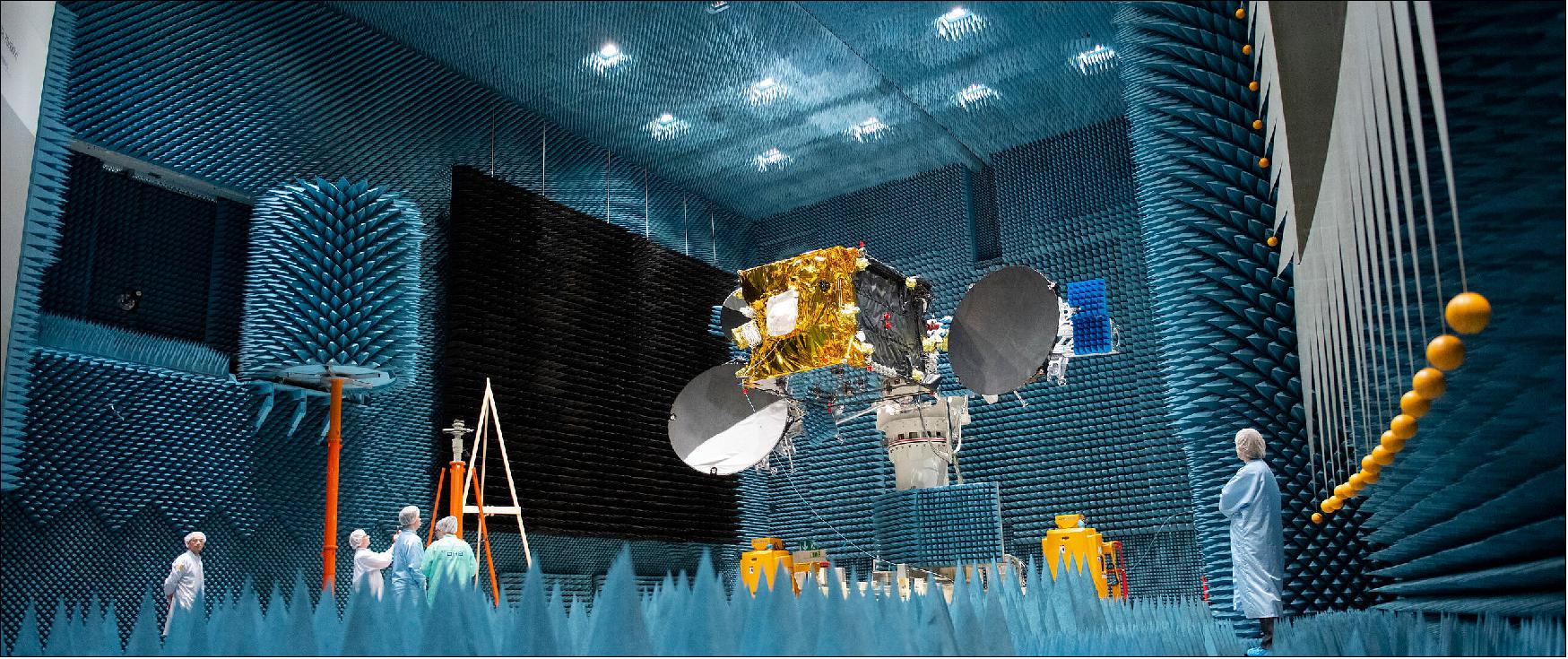
- These are metal-walled chambers kept isolated from external radio interference, whose inner walls are studded with foam pyramids to minimise radio frequency signal reflections, mimicking the void of space.
- “Up until now all GPLTB testing has taken place by plugging them into test boards,” adds Cédric. “These test campaigns mark the first time that their performances will be confirmed in terms of radiating signals.”
- Radio-frequency radiation forming of the navigation signals takes place through a combination of digital processing and interaction with the antenna, so practical radio frequency testing is essential to check the true payload performance.
- Cédric explains: “In our first phase we will perform near-field measurements directly around the antenna to measure all the characteristics of the signal shape, to check it matches previous conductance tests. Then via computation we can derive its far-field performance.
- “In the second test phase the actual far-field measurements will be performed, using another feature of the chambers. Thanks to a pair of specially-shaped paraboloid reflectors, the signal from the testbed can be reshaped as if it has travelled the very long distance that actual Galileo signals need to stretch, all the way from an altitude of 23 222 km down to Earth’s surface.”
• June 22, 2021: After months of constructive negotiations, ESA and EU signed today a new Financial Framework Partnership Agreement (FFPA) in a ceremony to celebrate the launch of the new EU space programme. 6)
- “This is a major achievement for ESA, recognised for its scientific excellence and technical expertise in designing space systems and ground facilities for the benefit of European citizens,” said ESA Director General Josef Aschbacher.
- “I’m grateful and would like to thank Commissioner Thierry Breton for the trust given to ESA, whose experience in all areas of space activities is rewarded here by an enhanced cooperation between our two institutions, bringing a new ambition for space in Europe.”
- The new EU space programme will ensure the continuity and reinforces the very successful flagships such as Galileo, Copernicus and EGNOS, that were designed by ESA, and positioned Europe in a global leading role in the areas of Earth observation and navigation. It will also support new initiatives especially in the domain of secure connectivity, research and development and space commercialisation, where ESA will play a key role, also offering new funding opportunities for entrepreneurship.
- The agreement signed today represents an EU investment of almost €9 billion in the period of 2021 to 2027, for ESA and European industry to design new-generation systems and programmes, crucial for the economy and a green and digital Europe. This funding adds to ESA’s budget and thus consolidates an ambitious set of mandatory and optional programmes, as defined by ESA Member States.
- The FFPA agreement defines the roles and responsibilities of all partners, the European Commission, ESA and the new EU space programme agency, EUSPA. It will also ensure the level of autonomy of ESA that is necessary to efficiently develop and implement the programmes.
- In the last two decades, ESA successfully developed Copernicus and the Galileo and EGNOS satellite navigation systems. Copernicus is a game changer and rapidly became, through its space component, the biggest provider of free and open Earth observation data in the world. The FFPA will allow this flagship programme to be taken to the next level, strengthening ESA’s role as the architect of European Earth observation by developing and building the Sentinels Expansion missions and the Sentinel next generation missions, in order to respond to new emerging and urgent user needs and to guarantee enhanced continuity of current data. Such missions will monitor various aspects of climate change and will support the implementation of key EU policies, such as the Green Deal. This places Europe at the centre of the international space stage, reinforcing its leading role in tackling climate change, monitoring biodiversity and supporting disaster relief.
- Galileo is Europe’s civil global satellite navigation constellation and a major success, being currently the world’s most precise satnav system and offering metre-scale accuracy to more than two billion users around the globe. The FFPA will bring Galileo to the next level with the development of the second generation, a further step forward with the use of many innovative technologies to guarantee unprecedented precision, robustness and flexibility of the system. This will boost European economy with the perspective for many new devices and services to offer positioning capabilities, a true revolution for emerging self-driving cars, autonomous drones and the whole ‘Internet of things’. EGNOS is the world’s most advanced Satellite-Based Augmentation Systems (SBAS), offering unprecedented, guaranteed position accuracy, not only to the aviation sector but also to other transport and agricultural sectors.
- The FFPA agreement includes additional components under ESA’s responsibility, such as the preparation and design of the future GOVSATCOM space segment and validation of a prototype for Quantum Key Distribution satellite in support to the new EU flagship on secure connectivity, In-Orbit demonstration/Validation service and space safety activities to monitor space hazards.
- ESA is the European Space Agency and Europe’s gateway to space. Its mission is to shape the development of Europe’s space capability and ensure that investment in space continues to deliver benefits to the citizens of Europe and the world. With 22 Members States, ESA is an intergovernmental organisation working closely with European industry, national space agencies and the European Union, as well as cooperating with space agencies worldwide.
- ESA covers a wide range of activities, including launchers, science, robotic and human exploration, navigation, Earth observation, telecommunications, space safety and operations. It designs, builds and operates facilities and a fleet of space missions in orbit around the Earth and in the Solar System, and flies European astronauts with international partners.
• May 27, 2021: Acting on behalf of the European Commission, ESA has signed two contracts for an overall amount of €1.47 billion, to design and build the first batch of the second generation of Europe’s Galileo navigation satellites. Following an intense process of open competition, these contracts have been awarded to Thales Alenia Space (Italy) and Airbus Defence & Space (Germany) to create two independent families of satellites amounting to 12 Galileo Second Generation satellites in total. 7)

- Galileo is Europe’s civil global satellite navigation constellation, currently the world’s most precise satnav system, offering metre-scale accuracy to more than 2 billion users around the globe. With improved accuracy, the new generation should be able to offer decimetre-scale precision positioning to all.
- The new G2 satellites will be constructed in a short time scale , allowing them to commence operations in space as soon as possible.
- The G2 satellites will gradually join the existing constellation, but will be much larger than existing satellites. Using electric propulsion for the first time, and hosting an enhanced navigation antenna, their fully digital payloads are being designed to be easily reconfigured in orbit, enabling them to actively respond to the evolving needs of users with novel signals and services.
- New on-board technologies include electric propulsion to propel the satellites from the orbit in which they will be launched to the final operational orbits, allowing two satellites to be launched at once despite their increased mass. Inter-satellite links between the satellites will let them routinely cross-check their performance and reduce their dependency on the availability of ground installations. The satellites will also feature a more powerful navigation antenna, more precise onboard atomic clocks, as well as advanced jamming and spoofing protection mechanisms to safeguard Galileo signals.
• March 3, 2021: Thales Alenia Space (TAS), a Joint Venture between Thales (67%) and Leonardo (33%) has signed a 772M EUR contract with the European Space Agency (ESA), acting in the name and on behalf of the European Union represented by the European Commission, to provide 6 satellites part of the 2nd Generation of Galileo constellation. 8)
- The first satellites of this second generation will be placed in orbit by the end of 2024. With their new capabilities relying on high innovative technologies (digitally configurable antennas, inter-satellites links, use of full electric propulsion systems), these satellites will improve the accuracy of Galileo as well as the robustness to interference and jamming and resilience of its signal. This will be key for the upcoming digital decade and will support more security & defense usages. Among its objectives, the Galileo 2nd Generation satellites will boost the EU industry competitiveness in the highly strategic domain of technologies for EU sovereignty.
- Hervé Derrey, CEO of Thales Alenia Space declared: “I warmly thank both the European Commission and ESA for the trust they put in our company to be onboard this important flagship program for Europe. This success emphasizes the capacity of Thales Alenia Space to address complex space systems. Galileo 2nd Generation will benefit from the company’s unique legacy in constellations and from its strong long-standing know-how in space navigation solutions, in particular with Galileo and EGNOS”.
- “More robust, more reliable, cyber secured, the 2nd Generation of Galileo satellites will provide users with an increased service availability”, Massimo Claudio Comparini, Deputy CEO and SEVP Exploration, Observation and Navigation at Thales Alenia Space said. “Thales Alenia Space will achieve the objectives of this challenging program, leveraging on its design capabilities as well as its digital and state-of-art up-stream technologies coming from our competence centers in Italy, in France, in Spain and in Belgium as well as the long standing expertise and assets for the Assembly Integration and Testing of satellite constellations in Rome”.
- Thales Alenia Space in Italy, prime contractor for the satellites and the space segment related activities, will lead a multi-national team from Europe’s Space Community including Thales Alenia Space entities, Thales, Spaceopal, Leonardo and other partners with proven capacity coming from 14 European Countries: Italy, France, Spain, Belgium, Germany, Austria, Sweden, Czech Republic, Denmark, Netherlands, Switzerland, Romania, Poland, Greece.
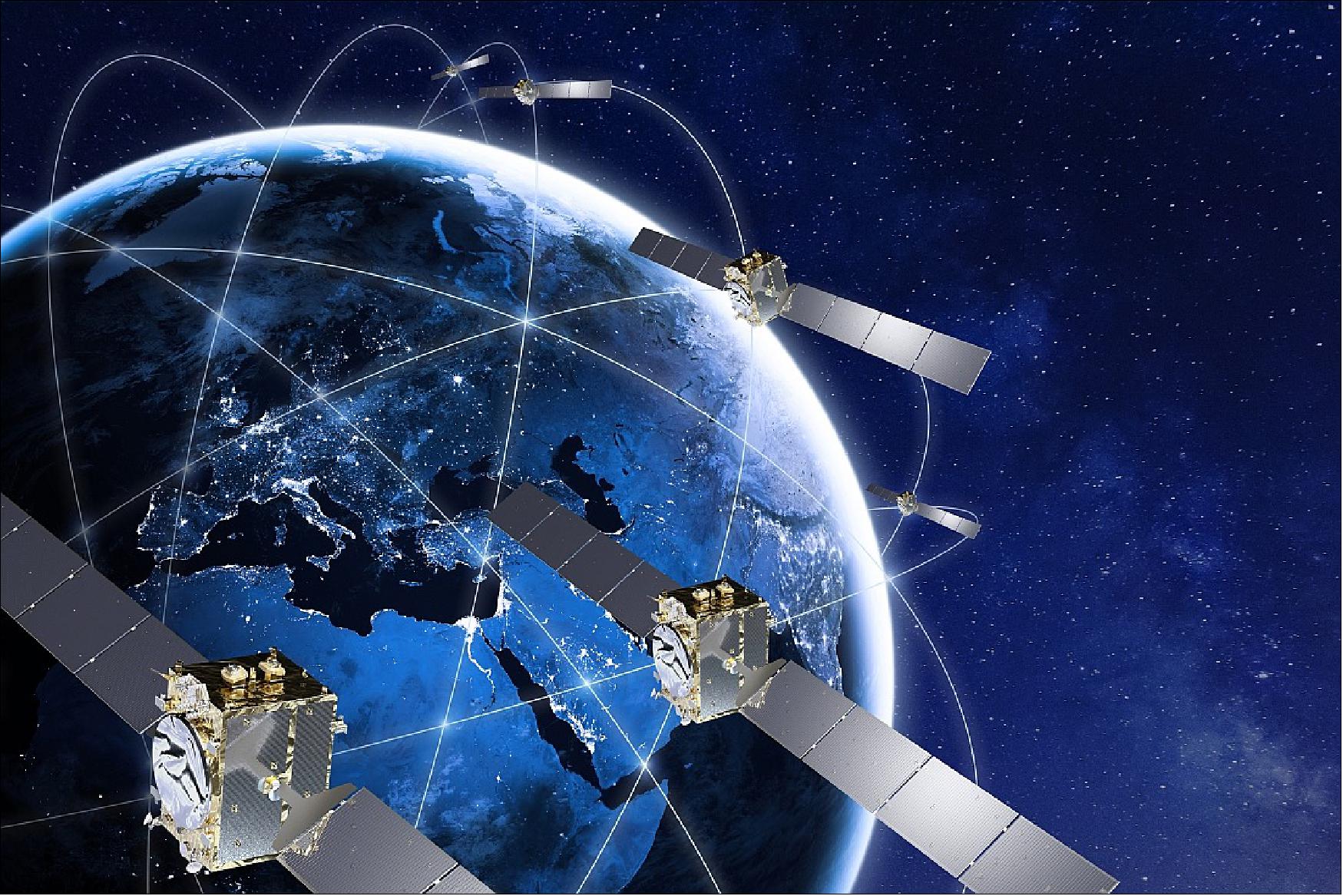
• August 14, 2020: Following the European Commission’s decision to accelerate development of Galileo Next Generation, ESA has asked European satellite manufacturers to submit bids for the first batch of the Galileo Second Generation (G2) satellites. The new spacecraft are expected to be launched in about four years. 9)
- The next-generation satellites will provide all the services and capabilities of the current first generation, together with a substantial number of improvements as well as new services and capabilities.
Industry Steps Up
- Following almost 24 months of a competitive dialogue procedure with the three large system integrators involved, ESA issued a so-called ‘Best and Final Offer’ invitation to tender on 11 August to Airbus, OHB System AG and Thales Alenia Space.
- ESA is implementing a dual-sourcing approach, and two parallel contracts are expected to be signed around the end of 2020 amongst the current three bidders. Under the plan, each of the two selectees will build two satellites for development purposes, with options for up to 12 satellites in total.
New, Improved and Revolutionary
- In addition to being more powerful, the second-generation Galileo satellites will be more flexible, able to be reconfigured in orbit in order to satisfy the expected evolution in end-user needs.
- A number of challenges exist for the bidders, as the goal of a digital and fully flexible design represents the cutting edge of industrial capability. Furthermore, the required navigation antennas, the ones that transmit the actual navigation signals to smartphones and other receivers on ground, have a very advanced design, and quite a lot of research and development work by ESA has been done and remains for industry.
- ESA has already built such an antenna as a proof of concept at the Agency’s ESTEC technology centre in the Netherlands to ensure feasibility, and the know-how has been shared with the three bidders.
- “Each bidder must determine how they can best manufacture the navigation antenna, and we’ll have to see how each proposes to do it. Also, requiring a fully flexible payload is quite a challenge. No such navigation spacecraft of that type have flown yet,” says Verhoef.
Transitioning into the Future
- The European Commission has decided that what was previously going to be called the ‘transition batch’ of new satellites will now become, in fact, the Galileo Second Generation satellites. The European Commission and EU Member States have already made clear that they want to be very ambitious and further increase the technical capabilities of the Galileo system. The change of name recognises the reality of how the current batch are actually shaping up.
- The transition satellites were initially foreseen as interim upgrades, to cater for the potential risk of late delivery of the later, completely new and very advanced G2 satellites.
- Based on constant measurements of the performance of the current satellites in orbit, their predicted lifetime has increased. So, together with a slight spreading out the launches of the so-called 'Batch 3' satellites, which are currently under construction by OHB and in testing at ESTEC, this will ensure service continuity before the new, advanced capabilities of Galileo come into operation.
- These second generation satellites will gradually take over from the current first generation satellites in the provision of Galileo services, and will therefore at a future date constitute a complete constellation plus the necessary in-orbit spares.
- ESA serves as the design, development and procurement agent for Galileo satellites on behalf of the European Commission, which funds the system overall.
• On January 20, 2021, the EC (European Commission) awarded two contracts for 12 Satellites (6 satellites each) for a total of EUR €1.47 billion, to Thales Alenia Space (Italy) and Airbus Defence & Space (Germany) following an open competition. 10)
- With this, the Commission is initiating the launch of the 2nd Generation of Galileo, the European satellite positioning system. The aim is to keep Galileo ahead of the technological curve compared to global competition and maintaining it as one of the best performing satellite positioning infrastructures in the world while strengthening it as a key asset for Europe’s strategic autonomy.
- The first satellites of this second generation will be placed in orbit by the end of 2024. With their new capabilities relying on high innovative technologies (digitally configurable antennas, inter-satellites links, new atomic clocks technologies, use of full electric propulsion systems), these satellites will improve the accuracy of Galileo as well as the robustness and resilience of its signal, which will be key for the upcoming digital decade as well as more security & military usage.
References
1) ”Galileo 2nd Generation takes 11 leaps forward,” ESA Applications, 14 July 2022, URL: https://www.esa.int/Applications/Navigation/Galileo_2nd_Generation_takes_11_leaps_forward
2) ”Sharpening satnav for smartphones,” ESA Applications, 19 July 2022, URL: https://www.esa.int/Applications/Navigation/Sharpening_satnav_for_smartphones
3) ”Galileo 2nd generation satellites ready to navigate into the future,” Airbus Press Release, 8 March 2022, URL: https://www.airbus.com/en/newsroom/press-releases/2022-03-galileo-2nd-generation-satellites-ready-to-navigate-into-the-future
4) ”RHEA is Awarded Multiple Service and Support Contracts from EUSPA,” RHEA Group Press Release, 20 December 2021, URL: [web source no longer available]
5) ”Galileo Second Generation proof-of-concept testing begins,” ESA Applications, 19 July 2021, URL: https://www.esa.int/Applications/Navigation/Galileo_Second_Generation_proof-of-concept_testing_begins
6) Nº 20–2021: ESA and EU celebrate a fresh start for space in Europe,” ESA Press Release, 22 June 20221, URL: https://www.esa.int/Newsroom/Press_Releases/ESA_and_EU_celebrate_a_fresh_start_for_space_in_Europe
7) ”Galileo Second Generation,” ESA-Agency, 27 May 2021, URL: https://www.esa.int/ESA_Multimedia/Images/2021/05/Galileo_Second_Generation
8) ”Thales Alenia Space will play a major role on-board Galileo 2nd Generation and will boost performances and cybersecurity for the constellation,” Thales Group Press Release, 3 March 2021, URL: https://www.thalesgroup.com/en/worldwide/space/press-release/thales-alenia-space-will-play-major-role-board-galileo-2nd-generation
9) ”Galileo next-gen satellites on the horizon,” ESA Applications, 14 August 2020, URL: https://www.esa.int/Applications/Navigation/Galileo_next-gen_satellites_on_the_horizon
10) ”Airbus and Thales win second-generation Galileo satellite contracts,” Galileo GNSS, 20 January 2021, URL: https://galileognss.eu/airbus-and-thales-win-second-generation-galileo-satellite-contracts/
The information compiled and edited in this article was provided by Herbert J. Kramer from his documentation of: ”Observation of the Earth and Its Environment: Survey of Missions and Sensors” (Springer Verlag) as well as many other sources after the publication of the 4th edition in 2002.